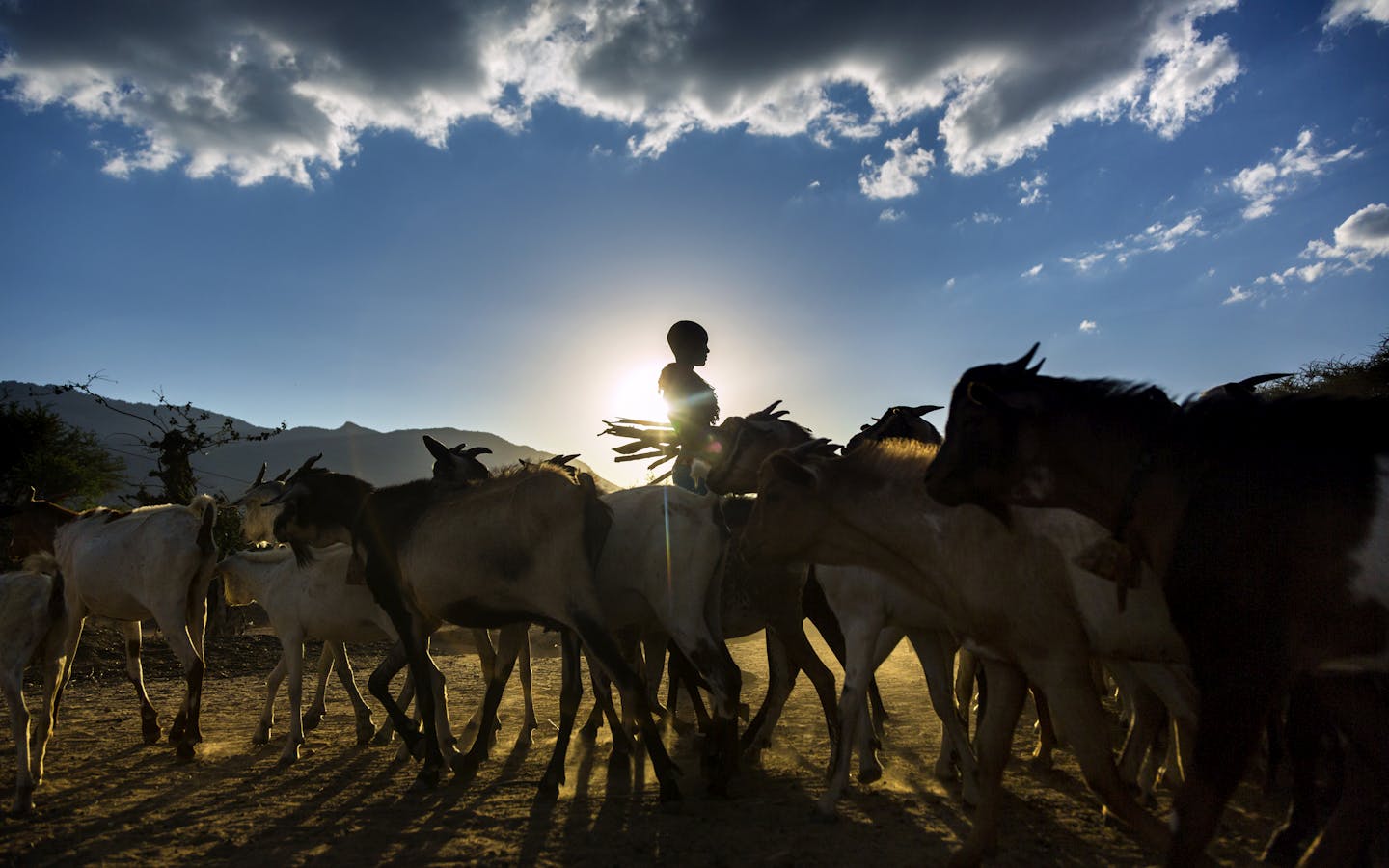Conservation International partners with Indigenous peoples and local communities — critical stewards of the environment who are often on the front lines of conservation.
We work to ensure that the conservation community implements a people-centered approach to conservation, honoring our commitments to Indigenous peoples and local communities and aiming to ensure that men and women can fully engage in, and equitably benefit from, conservation and livelihoods initiatives.
Effective conservation can only occur with and through the cooperation of Indigenous peoples and local communities living in and around protected areas — and elsewhere.
The facts
Indigenous peoples and local communities steward vast landscapes — many of which are important ecosystems that achieve conservation outcomes while also preserving cultural, spiritual and other values.
Research shows that the lands of Indigenous peoples and local communities are better managed and experience less species decline than other areas. Indigenous peoples’ knowledge and practices, perspectives and rights to land and benefit-sharing are essential to meeting local and global conservation goals.
Yet the communities that are closest to nature and most impacted by environmental destruction and climate change still struggle for recognition, respect, financial resources and a seat at the table when it comes to planning conservation and development.
Indigenous peoples and local communities hold an estimated 65 percent of global land area under customary systems — 18 percent of which is legally recognized.
Though they account for only 6 percent of the world’s population, Indigenous peoples protect a significant share of global biodiversity, manage 35 percent of intact forests and manage at least a quarter of carbon sequestered aboveground in tropical forests.
Women are responsible for at least 80 percent of food production in developing countries, yet they own less than 20 percent of land and receive only 5 percent of agricultural support services.
In the past 60 years, at least 40 percent of all conflicts within countries were linked to natural resources.
Our role
Conservation International’s Center for Communities and Conservation works to make conservation more inclusive, equitable and transparent by improving social and environmental governance to achieve more lasting, effective conservation and human well-being outcomes. The center recognizes and supports Indigenous peoples and local community stewards — both women and men — and ensures that tools are co-created with communities to inform decisions on the design and implementation of conservation approaches that benefit them. The center’s support of women as conservation stewards and decision-makers is central to this work.
Our approach
We focus on a "rights" framework that supports Indigenous peoples and local communities and conservation:
Rights
Inclusion and empowerment
Governance
Human well-being
Transparency
Sustainability and peace
The Center for Communities and Conservation connects Indigenous peoples and local communities to funding, technology and decision-makers, while partnering on training in conflict analysis, climate change adaptation and support for community-led development. Combined with existing knowledge, these tools and resources support Indigenous peoples and local communities in their efforts to secure their natural resources and participate in decisions that affect them.
How we work
Conservation led by Indigenous peoples and local communities
Conservation International supports conservation initiatives and activities that are designed and led by Indigenous people and local communities.
-
Dedicated Grant Mechanism
Established in 2010, the Dedicated Grant Mechanism for Indigenous Peoples and Local Communities is an US$80 million global initiative that supports the full participation of Indigenous peoples and local communities in the effort to reduce greenhouse gas emissions from deforestation.
© Thomas Muller -
Inclusive Conservation Initiative
The Global Environment Facility’s Inclusive Conservation Initiative aims to enhance Indigenous peoples’ and local communities’ efforts to steward land, waters and natural resources to deliver global environmental benefits.
© Conservation International/photo by Min Fan -
Financing for Indigenous peoples
Conservation International works to improve Indigenous peoples’ and local communities’ access to finance for programs that help protect nature and deliver biodiversity and climate benefits. We work to ensure their financial sustainability, technical capacity and long-term legal support.
© Cristina Mittermeier/sealegacy -
Informing policy from the ground up
Since 2010, Conservation International has worked with the International Indigenous Peoples Forum on Climate Change to conduct workshops with Indigenous representatives on key climate issues.
-
Indigenous Leaders Conservation Fellowship
The Indigenous Leaders Conservation Fellowship provides an opportunity for emerging Indigenous leaders to strengthen their leadership potential and explore solutions to the impacts of climate change and biodiversity loss using traditional knowledge.
© Lucas Bustamante
Human rights and conservation
Every person on Earth has the right to food, water and a healthy environment — and to participate in decisions that affect their lives.
-
Human rights
Studies show that when Indigenous peoples’ and local communities’ rights to govern their territories are upheld, biodiversity increases and more trees remain standing. Conservation efforts that neglect these rights can threaten the livelihoods and cultural identities of individuals and communities.
© Conservation International/photo by Scott Mills -
Conservation Initiative on Human Rights
Established in 2009, the Conservation Initiative on Human Rights is a consortium of international conservation NGOs that seeks to integrate human rights in conservation policy and practice. Conservation International acts as the secretariat for this initiative.
© Troy K Shinn/ www.troyshinn.com -
Stakeholder engagement
Stakeholder engagement — community understanding, support for and participation in conservation — underpins our work. It strengthens the impact assessments of conservation activities by including diverse expert knowledge, local and traditional knowledge, and local and traditional practices.
© Jessica Scranton -
Community-led development
Community-led development is a process for supporting community partners to define their vision for the future and nature's role in that vision. Our shared actions are investments in a sustainable future. This approach is integral to our WASH in Watersheds work.
© Trond Larsen
Women in conservation leadership
Conservation International recognizes that women are powerful agents for conservation, and aims to ensure that women can fully engage in, and equitably benefit from, our work.
-
Indigenous Women Fellowship
Fellowships with emerging leaders provide support for community-based research, projects and professional development skills. Watch the video at the link below to learn more about some of our past fellows.
© Conservation International photo by Katie Bryden -
Rising Women Program
This program fosters women’s growth both within Conservation International and in the regions where we work through partnerships such as the Women’s Earth Alliance.
© CI Peru/Marlon del Águila -
Women in rangeland management
Across northern Kenya and South Africa, where rangelands are the lifeblood of local communities, Conservation International is supporting women’s leadership in rangeland management to ensure more holistic and sustainable resource governance and climate resilience.
© Benjamin Drummond -
Women’s Council of the Amazon
In partnership with the Coordinator of the Indigenous Organizations of the Amazon Basin (COICA), a network of Indigenous organizations, we are supporting the Women’s Council, which includes leaders from across the Amazon and offers opportunities to influence Indigenous forest governance.
© Joshua Bousel/Flickr Creative Commons. Yasuní National Park in Ecuador
Environmental peacebuilding
-
Conflict sensitivity
Conservation cannot happen without peace, but the role of nature itself in helping to enable peace is often overlooked. Conservation International is demonstrating how conflict analysis and integrating peacebuilding efforts into natural resource management can lead to lasting conservation outcomes.
© Art Wolfe/www.artwolfe.com -
Peace ambassadors
Conservation International uses proven environmental peacebuilding and conflict sensitivity principles grounded in a human rights-based approach to ensure full and effective participation of Indigenous peoples and local communities in decision-making to achieve global conservation goals.
© Benjamin Drummond -
Climate and conflict
Conservation International seeks to address the root causes of deforestation and climate change to ensure Indigenous peoples’ rights and foster the promotion of peace and reconciliation in many countries, including Colombia, Kenya, Brazil, Peru and Timor-Leste.
© Robin Moore/iLCP -
Indigenous negotiations
In partnership with Oxfam America and Rainforest Foundation US, Conservation International is working to build Indigenous negotiation capacity, helping Indigenous peoples negotiate more equitable impact and benefit agreements with companies and other external actors.
© Benjamin Drummond
Publications
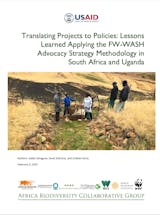
ABCG Freshwater Conservation and WASH lessons learned
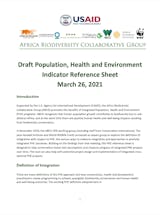
ABCG Population, Health and Environment Reference Sheet
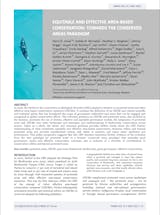
Equitable and Effective Area‐based Conservation: Towards the Conserved Areas Paradigm
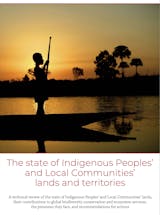
The State of the IPLC lands report
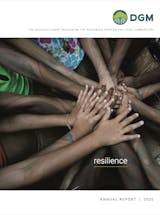
Dedicated Grant Mechanism Annual Report 2020
